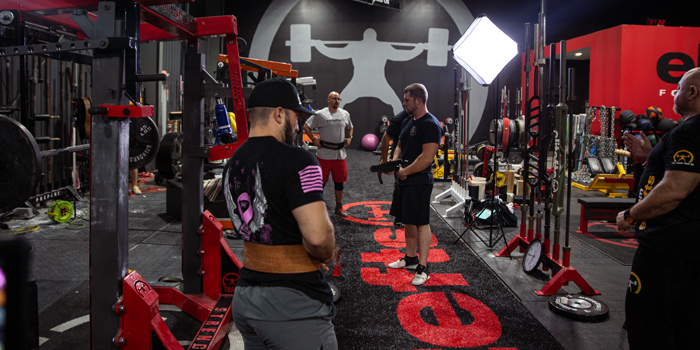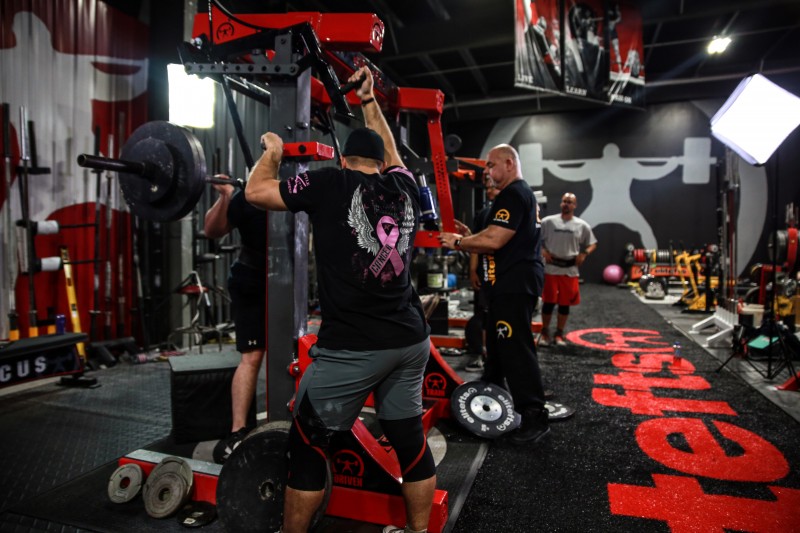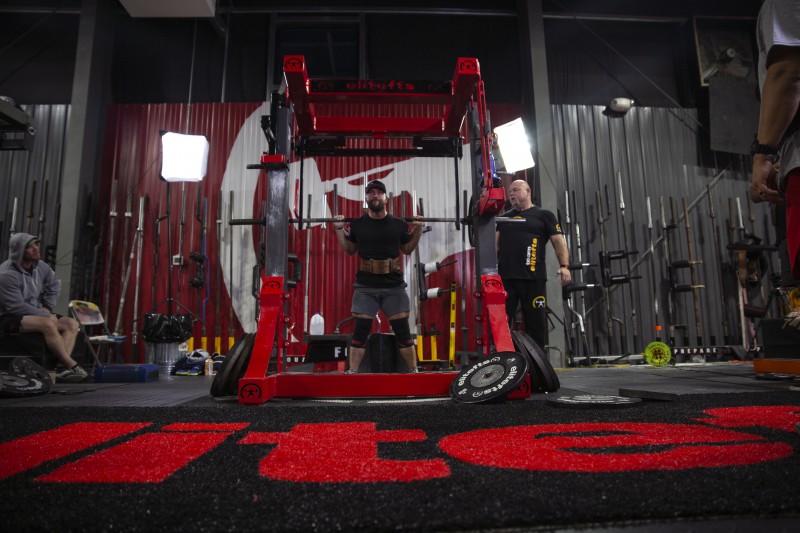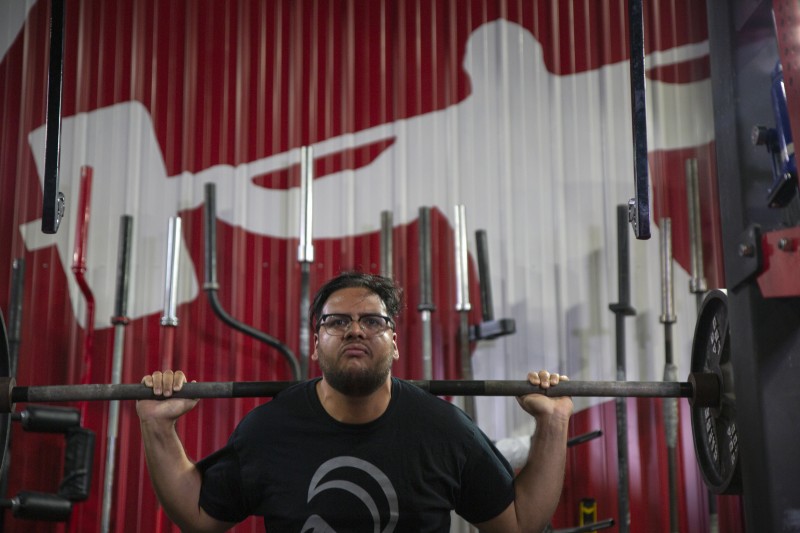

I’ve encountered many lifters who started in this sport only to leave within a year or two. Pain, injuries, and health are some of the various reasons why they stopped.
But when I go to meets and talk to lifters, I see a lot of you who are injured, hurt, overweight, out of shape, and eating like garbage.
When I start working with new lifters, longevity is one of the first things we discuss.
I take a look at what they are doing in their daily lives, along with their training to see what we can improve the most. By doing this, I get to see what the real issues are. And just about everything is within their control. Although things like technique and programming are extremely important, I’ve come to find that the following things are just as important to last in this sport.
RECENT: Breaking Up with the Barbell
Stop blaming the sport, and take responsibility for where you are in your lifting career. Work on some of these, and see how things will improve.
Avoid Overtraining
I tend to see this more with new lifters. A lot of beginners mash the gas and lift heavy every day, working to PR on every lift. They are making gains out of the gate, but then, all of a sudden, they stop. They can’t recover. They are fatigued. They get injured. In such a rush to hit a 315 bench or 495 deadlift, they end up losing sight of what’s going on. Many of us have been there. Many of us have learned the hard way. Many of us try to tell new lifters how to avoid this. Most of them don’t listen.
LISTEN.
You have to increase the amount of volume you are able to recover from. The only way to recover from higher volumes is intelligent programming, patience, smart recovery, and listening to your body. If you don’t feel recovered between sessions, then your volume is probably too high, and your recovery is not where it needs to be.
This will take some trial and error on your end, so if you want to expedite the process, get with myself or any of the other coaches on elitefts who actually know what they are doing and have experience with coaching lifters.
Consistency over intensity.

Address Problematic Movement Patterns
A lot of you live in the sagittal plane. You have for many years. When this becomes all your body knows, it adapts to it, and it thus becomes the norm. This usually leads to overuse patterns, which have predictable injuries.
There is no such thing as a dysfunctional pattern. The pattern that your body exhibits is what it has decided is best for accomplishing the task at hand, but if a certain pattern is causing you pain, you need to address it. Think of pain as your body’s way of telling you that something is wrong. So, even though the pain may be subtle in the beginning, don’t ignore it, as its voice will intensify if nothing is addressed, and you’ll end up injured.
The body will be like, “I tried to tell you, but you didn’t listen.”
Resting and avoiding movements isn’t the best way to approach this. I see a lot of coaches out there who just tell their lifters to lay off for six weeks to give the problematic area a break, but this doesn’t actually take care of the underlying issue. This is a short-sided approach. What happens when you need to or want to go back to it? What’s the long-term plan?
Fix Your Nutrition
Nutrition will be a game changer for a lot of you. One of the best ways to ensure that everything is covered is to eat whole, minimally processed foods. You know—things like fruits and veggies, single-ingredient carbs, proteins, and fats. You may need to get some blood work done to see if you have any deficiencies.
Also, removing inflammatory foods is paramount for achieving long-term success. These include foods that are high in sugar, vegetable oils, trans fats, refined carbs, alcohol, and processed meat. I know that ice cream and Oreos are staples in your diet, but we all know that it’s probably not the best choice for you as you pursue your goals.
I get it—you’re bulking. But that doesn’t mean you should be eating garbage all of the time. It’s okay to have an occasional meal that isn’t healthy, but shoveling in a gallon of ice cream covered in Oreos, and using chocolate milk to wash it down your hole every day isn’t really the best approach. Things like diabetes and cardiovascular issues are real, and just because you lift weights doesn’t mean you are exempt from them.
Improve Your Sleep
Sleep plays an extremely important role in your overall health as well. This is essentially where your body heals and restores itself. This is where a large amount of metabolic waste is removed. If you’re not getting enough quality sleep, it will actually impair your body’s ability to recover, thus increasing your chance for suffering injury. You spend about one-third of your life sleeping, or roughly 25 years. This is a lot of time, so ensuring that you get deep, meaningful sleep is where the money is at.
One of the best ways to improve your sleep and to get into a deeper state is to have a nighttime routine. Routine helps to get your mind and body prepared for bed. Just like the majority of you have a lifting routine, you should have one for both going to bed and waking up. Even if it’s only 15 minutes. You need to find what works for you. Here is what I usually recommend for my clients.
- Avoid blue light from screens at least two hours before bed.
- More bright light exposure during the day (get outside).
- Cut caffeine out by 2 PM (caffeine has a half life of six hours).
- Avoid alcohol and nicotine.
- Don’t fall asleep in front of a TV.
- Reduce fluid intake before bed.
- Sleep in a cool and dark room.
- Be consistent with sleep and wake times.
My typical routine:
- 8 PM: Dinner with the family
- 8:30 PM: Phone off
- 8:45 PM: Shower, brush teeth—you know, bathroom things
- 9 PM: Journal and tea
- 9:15 PM: Reading in bed till I fall asleep
This doesn’t happen every night, but the majority of the time, this is what it looks like. And when I got my routine under control, my sleep got better, and I was able to function at a higher level throughout the day.
Now if I can just get the dogs not to sleep in the bed with me.

Improve Breathing Mechanics
Oftentimes the response is “I’m alive; I’m breathing fine.” Think of it this way: you come into the world on an inhale and go out on an exhale. Breathing essentially bookends your life. You take roughly 20,000-25,000 breaths per day. It’s important, to say the least. I can almost guarantee that the majority of you have sub-optimal breathing mechanics and that this is a major player in limiting your performance and is the culprit when it comes to your pain. You can’t have good movement without good breathing mechanics (good movement is contextual).
The most common pattern I encounter is upper chest and neck breathing with the anterior (forward) expansion of the rib cage only. This can be caused by a handful of reasons, which is beyond the scope of this article. What we want to see is the expansion of the rib cage 360 degrees with equal movement in all directions. Remember that belly breathing isn’t the best cue. The belly should expand 360 degrees as you inhale; this is a byproduct of the diaphragm descending.
Think of keeping your bottom ribs down; slowly breathing through your nose; and filling the lungs from the bottom up, into your sides, and into your spine. This may be difficult for you at first, but just like any other movement, it takes reps.
Improve Cardiovascular Health
This myth needs to be laid to rest; you will not lose strength and power by working on your cardiovascular health. Stop using this as an excuse not to take care of yourself. It’s not hard; it’s just a matter of doing in. It can be done simply by dragging a sled, going for a walk, or taking a hike. The heart rate should be in zone 2, or 60-70% of your max heart rate.
I have all of my lifters walking daily up until about four weeks out from a meet. The first month after a meet or the first month working with me is spent in zone 2 and building an aerobic base. Then, we revisit it every four weeks with a few sessions due to the residual effects of aerobic training.
Having a large aerobic base allows your body to have increased oxygen availability, which allows training to be less fatiguing on your body. You’ll be able to complete tasks with a lower heart rate, which, in turn, will allow you to train at higher intensity levels. More work with less energy. Higher power output levels for longer durations. Having a higher aerobic capacity enhances your ability to recover quickly and more efficiently. I think this is one of the best things you can do for everything ranging from increasing mobility to reducing pain, decreasing risk for injury, and improving overall health.
More Human Movement in your Life
This point relates to the one above about addressing problematic patterns. One of the best ways to do this is to actually move your joints and body outside of what you do in the gym. Most of you don’t move much outside of sagittal. You squat, bench, and deadlift—none of which are essential for human health and movement.
Here comes the “squatting and deadlifting (hinging) are the most foundational and essential movements to human life group.” No. No, they are not.
Honestly, I can’t remember the last time I squatted and hinged as I do in the weight room outside of the weight room. How much are you really squatting as you do in a meet in your everyday life? You’re not.
Plenty of individuals who are in good health don’t train “squat” every day to sit on their couches, yet they don’t need to go to a gym to train it.
Plenty of individuals who are sedentary and have poor health “squat” every day to sit on their couches.
How many of you actually get in a proper deadlift position to pick up a laundry basket or tie your shoes? No, you typically round your back, and then, you come to visit me and say that you hurt your back tying your shoes.
I have come to find out that for the majority, it’s probably because you don’t expose your body to the actual human movements it needs to function during the other 22-23 hours outside of the gym.
Ways to incorporate more human movement into your life:
- Mobility and animal flows
- Take a yoga class.
- Go for a hike.
- Rock climbing
- Dancing
- Walk, walk, walk, walk
A lot of these are also going to help with your aerobic conditioning.
Lose Some Weight
Being overweight isn’t healthy. And don’t kid yourself: just because you lift weights doesn’t make you a pillar of health in the community. Being at an unhealthy weight does nothing for your longevity, not only in powerlifting but also in life. I understand that some of you compete in heavier weight classes, but for the majority of you, being at 12-16% body fat will be one of the best things you will do for your overall health. The health consequences that come with being a fat powerlifter aren’t worth it. Nobody cares about your leverages.
Spend Gym Time Wisely
I don’t know how some of you spend three-plus hours in the gym. What are you doing exactly? What are you doing the whole time?
I see a lot of you spending 30-45 minutes on a foam roller or doing bird dogs, planks, and banded walking glute “activation” drills. If you need 15 minutes of glute activation drills because you need to turn your glutes “on” to squat heavy you have bigger issues that should be addressed in your warm-up. If you’re spending all of this time warming up but you still have pain and problematic patterns, you need a different approach. Stop wasting time on things that aren’t helping you to move forward. Find things that actually help you to feel better and move better.
Here’s an idea: take those 30-45 minutes, and split it in half, where you do a shortened warm-up and then add some conditioning at the end of your training. This would be a better use of your time and would be much more beneficial long term.
Another thing: does it take you two to three hours to complete a training session when in all reality you mostly trained for 45 minutes? Most of you will say, “I train two to three hours a day” but you don’t. You take 5-10 minutes between working sets, scroll the ‘gram, and chat it up with someone who doesn’t really want to talk to you. You’re at the gym to train. Get in, and get out.
Keep a stopwatch, and time how much you actually spend lifting. Get in, get to work, and get out.
Find a Good Therapist
As a manual therapist, I have to include this.
Find a massage/manual therapist, movement therapist, physical therapist, and/or chiropractor who actually understands you as an athlete and understands your sport. I feel that if therapists have experience under the bar, they are able to relate and understand what you are going through, and they can help you to achieve your goals. BUT don’t use a therapist as a Band-Aid if you’re not willing to take care of the other things mentioned in this article. As a therapist, I would rather you spend your time and money on training and movement-based modalities. If you have the expendable income, get a massage. Otherwise, save your money. Terrible business model. I know. My biggest philosophy is that you have to heal yourself. Passive care/treatment doesn’t heal you; it’s a small tool that could possibly aid in your recovery. This is why working with a therapist who knows the sport, knows the body, and knows movement is extremely important.
Training is only a small part of the process. There's 24 hours in a day and 168 hours in a week. You’re not training during all of them, so what you do in between those training sessions is going to dictate your longevity in this sport. Take a look at where you can improve in these areas. Although the results may not be instant, neither is a 700-pound deadlift. Be patient. Put your time in, and find what works for you.











I never claimed to be an expert.
I've been a performance coach for 10 years. I work as a pain and movement specialist at a clinic in Cleveland and have my own business working with active professionals where I provide manual therapy, movement therapy, and coaching.
I don’t have a world record. I don’t have an elite total. My lifts are far from impressive. I did compete at APF nationals and took 3rd at 242 weighing 225ish and also qualified and competed at WPC worlds.
What I do have that a lot of other “coaches” and "experts" don’t is an elite education.
For the past 10 years, I’ve had the opportunity to learn from and train with some of the strongest and smartest lifters in the game. This list includes Dave Tate, Casey Williams, Brandon Smitley, Joe Sullivan, Julia Anto, Christian Anto, Nate Harvey, Lily Starobin, Zach Gallmann, Joe Schillero, Murph, Kirk Sabalka, Nick Showman, Josh Kincaid, JL Holdsworth, and many more all who I can call at a moments notice to talk shop.
Some of my closest friends and clients are elite level lifters who I help with pain and movement issues. They've decreased pain, improved their lifts, and improved recovery. I received a message from a lifter at Westside the other day about this article that stated
"I read your new article and I love it. Strength athletes are awful at ensuring their longevity in sport."
I also have a column on this site since 2017 and also have been contributing since 2012 and they asked to renew my sponsorship for another year.
@roy -- if you don't know who Nic is you clearly haven't been following the absolute best strength athletics resource on the planet for very long...you should click on his profile and read some of his other work. If you aren't applying this stuff chances are you haven't been in the sport long as an athlete or a coach.
@Jordan thank you! I appreciate the support.
@Bill, this is a game-changer for everybody.